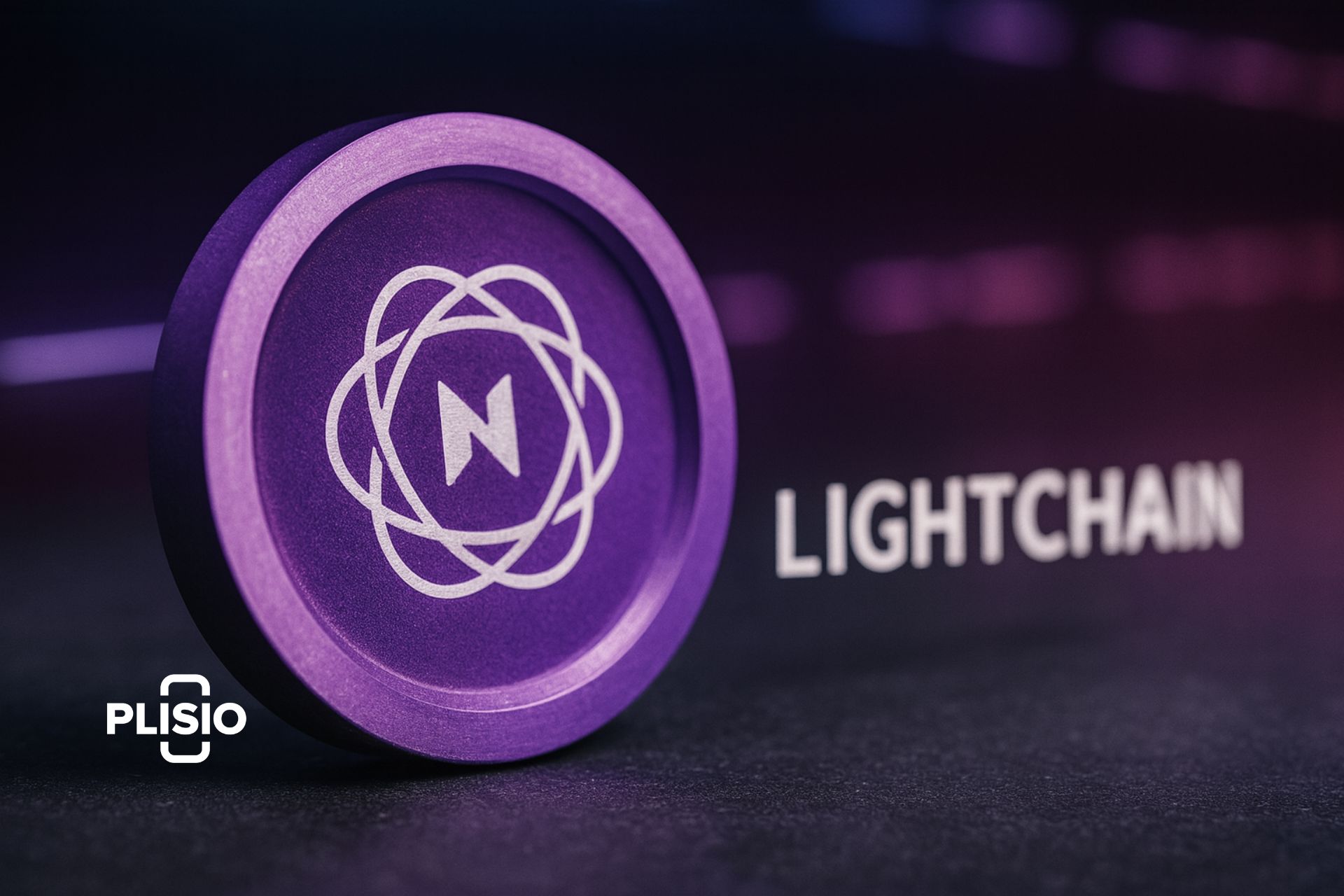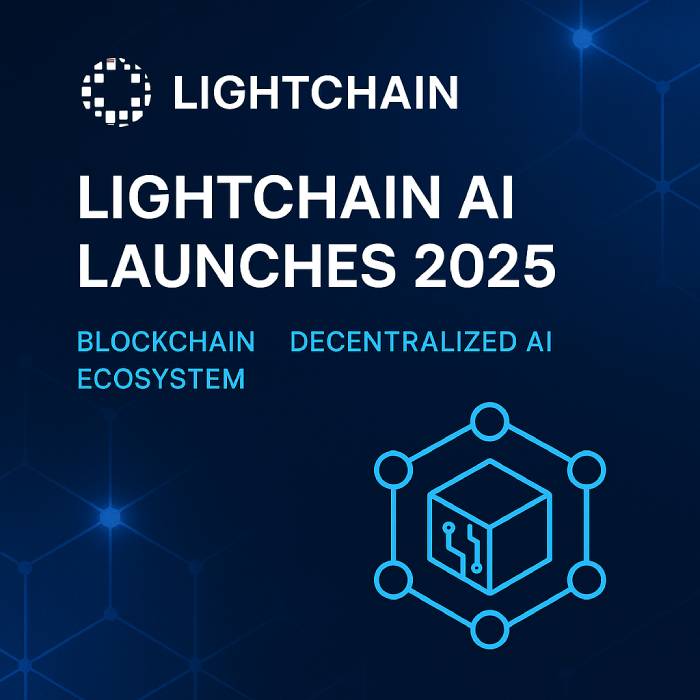Lightchain AI 2025: Shaping the Future of Decentralized AI on the Blockchain

Think of a time when AI isn't just stored on cloud servers controlled by tech corporations, but instead lives in a blockchain network that anybody can join and operate. Lightchain AI (LCAI) is trying to build the first truly decentralized blockchain ecosystem powered by AI in the world. This is a major project that uses both AI and blockchain technology. This new way of doing things is meant to give people and communities more power by making AI tools open to everyone. This will make sure that everyone gets a fair share of the benefits of new technology. Lightchain AI aspires to use the security and transparency of blockchain to create a space where people can work together and benefit from AI breakthroughs. This will start a new time of creativity and openness in the tech industry.
What Is Lightchain AI?
Lightchain AI is a revolutionary system that combines blockchain with sophisticated AI technologies to make things perform better. Lightchain AI is unlike like most centralized AI since it lets decentralized AI apps run on a network of nodes that is safe and can grow. This implies that tasks like training models, making predictions, and doing math may be spread out across the network, which makes it less likely that something will go wrong. This new connection not only makes AI processes safer and more dependable, but it also allows developers, organizations, and individuals access to blockchain infrastructure that is powered by AI that is open, safe, and made for real-world application. In the long run, this will make technology easier to use and more fair.
Lightchain AI Launches: Core Innovations
At the center of Lightchain AI’s design are two breakthroughs:
- Proof of Intelligence (PoI) consensus. The network doesn't just reward validators and participants that mine or stake; it also compensates those who do real-world AI tasks like training AI models, making inferences, and doing computations. This not only protects the blockchain, but it also helps AI run better.
- The Artificial Intelligence Virtual computer (AIVM) is a blockchain-based virtual computer that is optimized for machine learning, model training, and decentralized AI execution. It is very important for making decentralized solutions possible. The AIVM changes over time through community-driven ecosystem development, which shows how versatile Lightchain AI is. Developers suggest improvements, validators approve them, and the system improves to handle new AI workloads and decentralized apps (dApps).
Together, these innovations make Lightchain AI a platform designed for scalable, decentralized artificial intelligence that can support both businesses and individuals.

Why Lightchain AI Matters in 2025
We live in a world where centralized AI systems are expensive, hard to understand, and controlled by a small number of companies. Lightchain AI is about to change this concept by providing a decentralized AI architecture that works well within the Lightchain.
- The worldwide AI and blockchain market is worth more than $700 million in 2025, and it keeps growing quickly in all AI industries.
- More than 560 million people around the world use blockchain, and the AI business is valued around $391 billion. By 2030, it is predicted to be worth $1.8 trillion.
- Lightchain AI's community-driven presale phase raised over $21 million, which is a big step forward for the project's tokenomics model and ecosystem development.
The mainnet launch in late July 2025 is a very important date because it moves Lightchain AI from theory to reality. The bonus round is now live, so investors and developers can buy LCAI tokens at a set price before the mainnet is live.
What Sets Lightchain AI Apart in the Blockchain Ecosystem
Key Advantages Over Traditional AI Systems:
| Category | Traditional AI (Centralized) contrasts sharply with the emerging blockchain landscape. | Lightchain AI (Decentralized) is at the forefront of integrating blockchain and AI technologies. |
|---|---|---|
| Infrastructure | Cloud platforms tend to centralize control, which contrasts with the principles of decentralized blockchain and AI. | Distributed nodes, decentralized innovation |
| Data Privacy | Reliant on corporate servers, privacy risks | On-device AI execution, zero-knowledge proofs |
| Trust & Audit | Third-party verifications are essential for ensuring trust in blockchain and AI solutions. | Smart contracts and blockchain immutability enhance the reliability of transactions in cryptocurrency. |
| Scalability | High compute costs and limited scalability are challenges that blockchain and AI must overcome. | Lightweight protocols for scalable, efficient AI |
Pros and Cons of Lightchain AI
Pros:
- Community-driven governance and transparent roadmap.
- Tokenomics model designed to reward validators, developers, and users.
- Strong focus on privacy through on-device data and zero-knowledge cryptography.
- Supports decentralized applications (dApps) and scalable AI workloads across industries using advanced AI.
- Liquidity potential boosted by active presale and bonus rounds in the cryptocurrency market, with Lightchain AI raising over 21 million.
Cons: The challenges faced by projects like Lightchain AI remain significant.
- Still in early adoption—real-world enterprise deployments of blockchain and AI remain limited.
- Technical complexity may slow onboarding for small businesses, but Lightchain AI remains committed to simplifying access.
- Regulatory frameworks for decentralized AI are evolving, particularly as Lightchain AI remains under scrutiny.
- Performance depends on active node participation.
Lightchain AI Use Cases and Ecosystem Development
Lightchain AI isn’t just about abstract theory—it’s built for real-world AI applications:
- Enterprise Solutions: AI-driven analytics, workflow automation, and compliance-friendly machine learning are essential for navigating the blockchain landscape.
- SMBs can access easy-to-use AI-powered blockchain tools with subscription models during the AI presale.
- Industry Applications: Healthcare, finance, and manufacturing deploying decentralized AI models with compliance frameworks.
- Developers and Users: Incentives through LCAI tokens, smart contracts, and a growing Web3 community.
Expert Views on the Potential of Lightchain AI
- Dr. Karen Liu, MIT, recognizes that Lightchain AI remains at the forefront of AI and blockchain innovation.: “Lightchain AI’s approach could mark a turning point in the future of decentralized AI systems. By distributing AI model training and computation across nodes, it lowers dependence on centralized platforms.”
- James Patel, TechFrontier: “The project’s presale milestone and upcoming mainnet launch make it one of the most watched initiatives in the crypto and blockchain space. But execution will be everything in the competitive blockchain landscape, especially as Lightchain AI remains a frontrunner.
- Elena García, ETH Zurich: “The combination of AI and blockchain isn’t just hype—it’s becoming a new security standard. Transparency, auditability, and smart contracts are reshaping how we trust AI.”
Final Thoughts: The Future of Decentralized Lightchain AI
Lightchain AI is more than just another crypto project; it's a daring attempt to change the future of ai-powered blockchain with its new strategy and community-driven plan. The project's mainnet debut in late July 2025 could be its most important event, converting its idea into real infrastructure.
It's not apparent yet if Lightchain AI will become the first real AI-powered blockchain to be widely used, but one thing is sure: Lightchain AI could change the way we design, run, and trust AI apps in the blockchain ecosystem.




